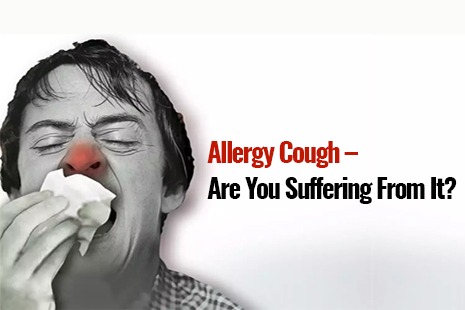What is allergy?
Allergy is a hyperactive response by an individual to an otherwise harmless environmental substance. It is a quality of life disease where the immune response of the body intensifies on each exposure and inadequate or insufficient treatment can progressively lead to permanent disabilities. Allergy has been attributed to various chronic conditions like cough, which we will be discussing in this article.
What is an allergic cough?
It is a frequently encountered throaty cough resulting from allergic rhinitis, bronchitis or asthma, it is usually seasonal and without a lot of mucus accompanying it. It can be seen on exposure to certain allergens. It can be a chronic cough that is seen during a certain time of the day that time visit ent clinic.
How is the allergy prevalence in India?
Allergy has been perceived as a western disease and not a lot of research has been done about it in the Indian subcontinent. There is a recent increase in the number of allergic patients all around the country, especially in the urban population, which can be correlated to the constant exposure to micro pollutants in the air we breathe.
Allergy is believed to be a hereditary disease with recent studies suggesting an increase in the incidence and severity of developing the disease in the offspring. India being a diverse country with different soil and weather throughout the states it is tricky to classify allergy to the whole country, allergy therapists keep an eye on the local allergens to the particular region.
What are the triggers for allergy?
Allergens can either be inhaled, injected or ingested. In tier one cities the major contributors are air pollution caused by biomass, fossil fuels, and vehicular exhausts. India is also a very fertile country with various crops growing seasonally so cyclically the pollen exposure also changes. Dhoop sticks and Mosquito coils have been the most used allergens in our country. Poverty or inadequate housing has given rise to bedbugs and cockroaches. Higher prevalence of parasitic infections due to the quality of drinking water or food makes us further immunocompromised.
What are the home remedies to follow?
Using a humidifier at home or office settings has shown some positive impact by reducing the inhalation allergen load. Using a mask when being exposed to dust or strong smells, at home or outside. Avoid using diffusers at home or in the washrooms. Shifting to unscented soaps and detergents. Regular cleaning of winter wear, mattresses, carpets, bed linen, curtains/blinds. Saline nasal irrigations, breathing exercises. A good balanced diet rich in vitamin C, A and D
Treatments for allergy.
Age old process of giving antihistamines to allergic patients helps in keeping the symptoms at bay. Use of inhalational steroids has given an improvement in quality of life, but have no long-term benefits if discontinued. The concept of immunotherapy is gaining momentum in the urban population but there is a severe lack of information and a lot of critical theories disregarding the proposed revolutionary treatment. ENT clinic in Gurgaon.
The lack of proper committees and inspectors to regulate the quality of the allergens and vaccine manufacturers in the country has limited the availability of superior quality medicine. Nevertheless, allergy practitioners are seeing positive outcomes to allergy immunotherapy in our country. The advent of immunomodulators like omalizumab is a game changer when used in conjunction with immunotherapy. But the high costs, limited supply of the drug puts a serious strain on its use in regular clinical practice.

